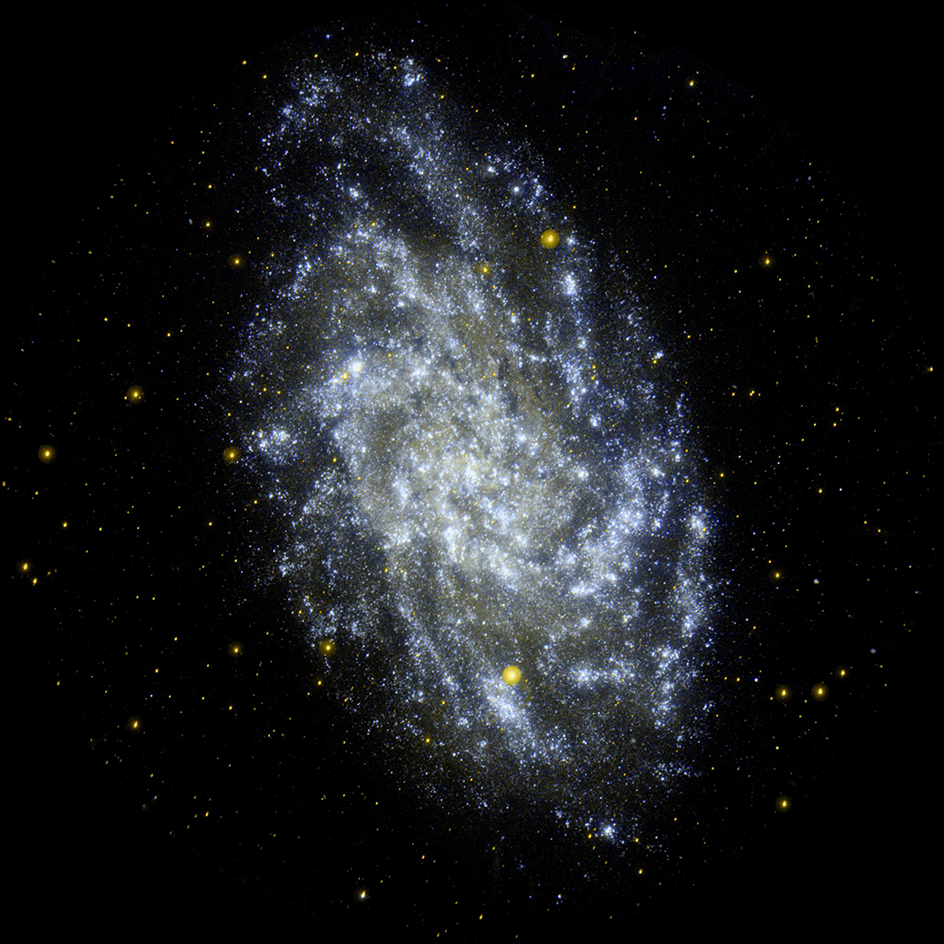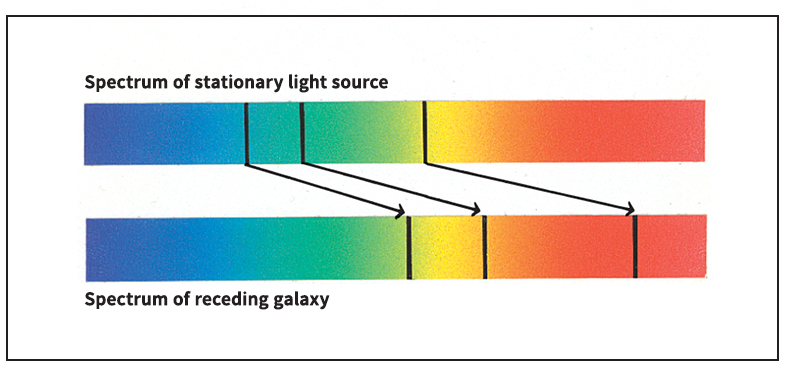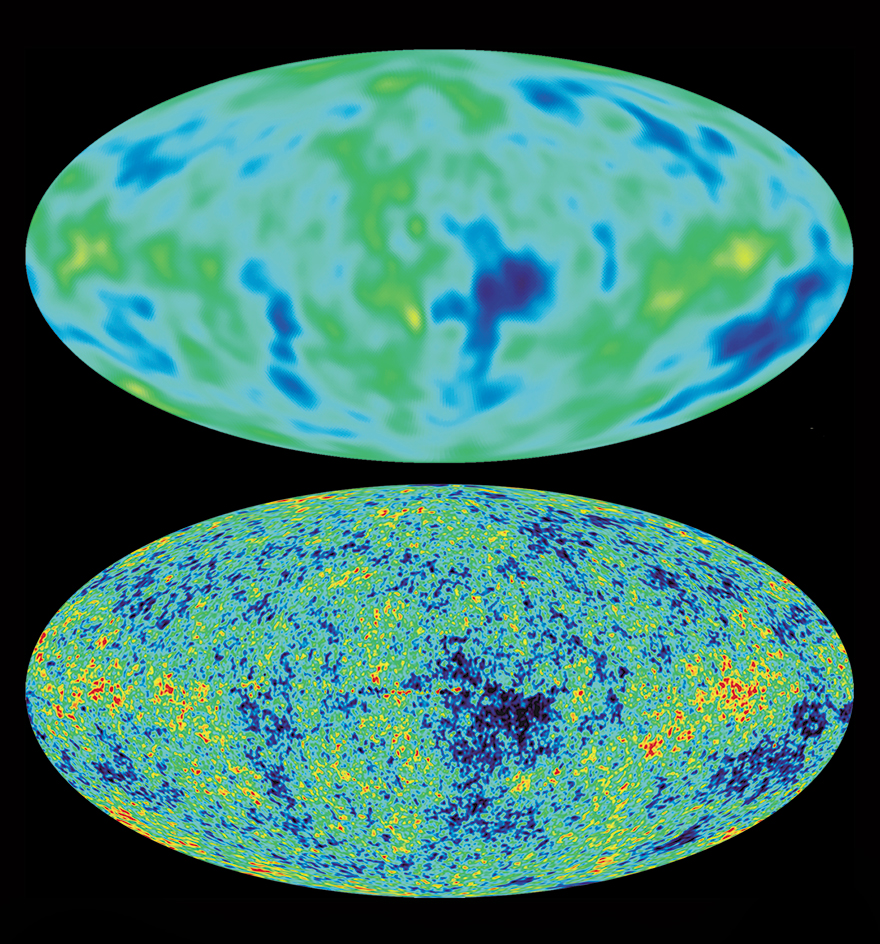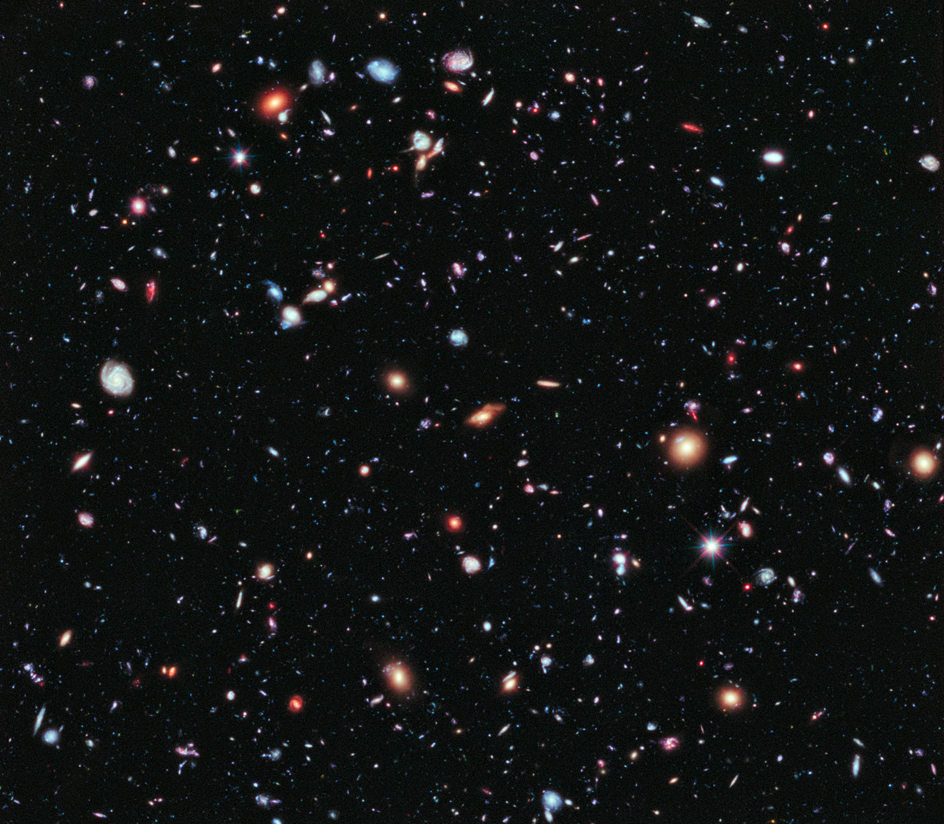Universe consists of all matter and all light and other forms of radiation and energy. It includes everything that exists anywhere in space and time.
The universe includes Earth, everything on Earth and within it, and everything in the solar system. The solar system contains the sun and the planets that orbit it along with millions of smaller bodies, such as comets, asteroids, and meteoroids.
All stars, including the sun, are part of the universe. Some other stars also have planetary systems. In addition to planets, stars, and other bodies, the universe contains gas, dust, magnetic fields (areas of magnetic force), and high-energy particles called cosmic rays.
Stars are grouped into galaxies. The sun is one of hundreds of billions of stars in a giant spiral galaxy called the Milky Way. This galaxy measures about 100,000 light-years across. A light-year is the distance that light travels in a vacuum in a year—about 5.88 trillion miles (9.46 trillion kilometers).

Galaxies tend to be grouped into clusters. Some clusters appear to be grouped into superclusters. The Milky Way is part of a cluster known as the Local Group. This cluster measures about 10 million light-years in diameter. The cluster also includes two giant spirals known as the Andromeda Galaxy and the Triangulum Galaxy and about 50 small galaxies called dwarf galaxies. The Local Group is part of the Local Supercluster, which has a diameter of about 200 million light-years.
On an even larger scale, galaxies are grouped into huge networks made up of stringlike regions of galaxies called filaments. Relatively empty regions of space called voids surround these filaments.

Size of the universe
No one knows for sure whether the universe is finite (limited) or infinite in size. Scientists now know that the observable universe includes billions, possibly even trillions, of galaxies. Measurements show that light from the most distant galaxies observed took over 13 billion years to reach Earth. The galaxies appear in every direction across the sky.
Among the most distant objects ever observed are tremendously bright objects called quasars. Individual quasars are as much as 1,000 times brighter than the entire Milky Way. Evidence suggests that the centers of quasars may each contain a giant black hole. A black hole is an object whose gravitational force is so strong that nothing—not even light—can escape from it. Matter falling into a massive black hole could produce the radiation emitted (given off) by quasars.

Astronomers can determine the distance to a faraway object by measuring the object’s redshift. Redshift is a stretching of the wavelength of light or other radiation emitted by an object. Wavelength is the distance between successive crests of a wave. The stretching is called redshift because red light has the longest wavelength of any visible light. Objects farther away from Earth have larger redshifts.
A type of redshift known as the cosmological redshift occurs in the radiation emitted by cosmic objects because the universe is expanding. That is, every point in the universe is receding (becoming farther away) from every other point. The expansion causes distant objects to recede from one another at a rate that depends on the distance between them. More distant objects recede more rapidly and have larger redshifts.
The expansion of the universe does not cause the matter within a particular object to expand, however, because attraction among its atoms and molecules holds the object together. Similarly, the force of gravity prevents the stars in a galaxy from receding from one another. But the galaxies do recede from one another. The expansion of the universe is a basic observation that any successful theory of the universe must explain.
Changing views of the universe
In ancient times, many people thought that the heavenly bodies represented gods and spirits. Some ancient scholars thought that the sun, moon, planets, and stars revolved around Earth. But the Polish astronomer Nicolaus Copernicus suggested in 1543 that Earth and the other planets revolve around the sun. Later astronomers showed that the sun is a typical star.
Knowledge of the universe increased with the development of the telescope, the photographic plate, and the spectroscope (an instrument that analyzes light). Astronomers discovered that the sun is moving within a large system of stars, the Milky Way. About 1920, astronomers realized that not all of the nebulae (fuzzy patches of light seen in the night sky) are part of the Milky Way. Rather, many of these objects are actually other galaxies. The discovery of the redshift of distant galaxies led to the theory of the expanding universe.
The big bang theory provides the best explanation of the basic observations of the universe. According to the theory, the universe began with an explosion—called the big bang—13.8 billion years ago. Immediately after the explosion, the universe consisted chiefly of intense radiation and hot particles. This radiation, along with various kinds of matter and energy, formed a rapidly expanding region called the primordial fireball. After thousands of years, the fireball cooled.
In time, the matter broke apart into huge clumps. The clumps became galaxies, many of them grouped into clusters, superclusters, and filaments. Smaller clumps within the galaxies formed stars. Part of one of these clumps became the sun and the other objects in the solar system.
Strong evidence for the big bang theory comes from observations of faint radio waves coming from all directions in space. Scientists believe this radiation, called the cosmic microwave background (CMB) radiation, is all that remains of the primordial fireball.

The steady state theory offers another explanation for the expansion of the universe and other observations. According to this theory, the universe has always existed in its present state. As the galaxies move apart, new matter appears between them and forms new galaxies. However, the existence of the CMB radiation and detailed studies of galaxies and supernovae (exploding stars) have cast strong doubts on the steady state theory.
Studies of nearby stars, distant galaxies, and the CMB radiation give scientists an idea of the types of matter and energy that make up the universe. These studies suggest that the universe consists of about 4.6 percent ordinary matter and radiation. The matter consists mainly of hydrogen and helium. The radiation includes light, radio, and other waves as well as cosmic rays. The rest of the universe is made up of matter and energy that scientists cannot directly observe. About 24 percent of the universe is dark matter, matter that does not emit, reflect, or absorb observable light or other radiation. The remaining 71.4 percent of the universe is composed of dark energy. Dark energy is a little-understood form of energy that is apparently making the universe expand more and more quickly.
Observations of supernovae and the CMB radiation also suggest that the present age of the universe is about 13.8 billion years. In addition, this estimate agrees with studies of the ages of stars in groups called globular star clusters, which contain the oldest stars found in the Milky Way.
The future of the universe
Many studies indicate that the universe will continue to expand. Measurements of the brightness and redshift of supernovae in distant galaxies suggest that at the present time the expansion of the universe is accelerating. Observations of the CMB radiation provide evidence that the universe has the appropriate mixture of matter and energy to continue expanding. Both of these types of studies give similar predictions for the rate at which the universe is expanding.

Theories of the universe based on the German-born physicist Albert Einstein’s theory of general relativity allow for the possibility that all of the matter in the universe could come back together again in a big crunch. This would happen if the gravitational pull of all of the universe’s matter was strong enough to overcome its expansion. The entire universe would eventually collapse and then explode, entering a new phase that might resemble the present one. However, other studies of the CMB radiation strongly suggest that the universe has an infinite mass and volume and that it will expand forever.
